HERE ARE THREE ALTERNATIVES
First of all, free weights worked for me better than anything! At age 18, I started with barbells only – heavy bench presses, bent over rows, military presses and heavy curls. This was my period of rapid growth. I remember growing out of my clothing quickly. My legs seemed to grow from running up and down basketball courts. But I added squats later.
Through my twenties and into my thirties, I continued with barbells and dumbbells. Then I added machines with weight stacks – through my forties, fifties and sixties.
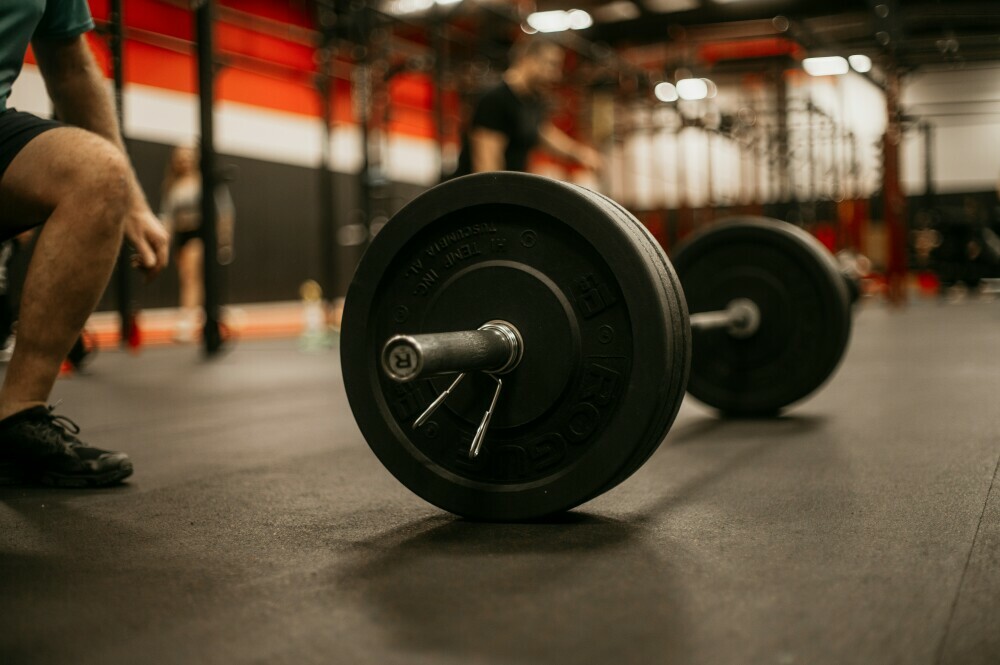
I then began to work out at home. Through my seventies and into my eighties, I saw the need to protect my joints and lighten my weight load – while increasing reps.
I also wanted to concentrate more fully on core exercises. My recent article on core training is shown here.
The three alternatives to free weights for me are now:
- Body weight
- Resistance bands
- Bullworker tools
This post will continue with my use of these alternatives and why they are important. Toward the end, I will show a few sources of relevant equipment.
BODYWEIGHT
I have always enjoyed push-ups for upper body development without equipment. At the beginning of my military service, I was compelled to do chins and push-ups at any time, but always before breakfast. (This was ROTC summer camp).
A very important beginning of my core workout is the plank, an isometric exercise with no equipment necessary. See below.

Since the plank and push-up begin with similar positions, I did these in combination.
Here is an 8 minute plank workout, with a variety of planks. This is an advanced routine.
My favorite form of push-ups at this point is the diamond push-up, shown below. This hand position works the triceps muscles for me better than any other hand position or any other triceps exercise with equipment.
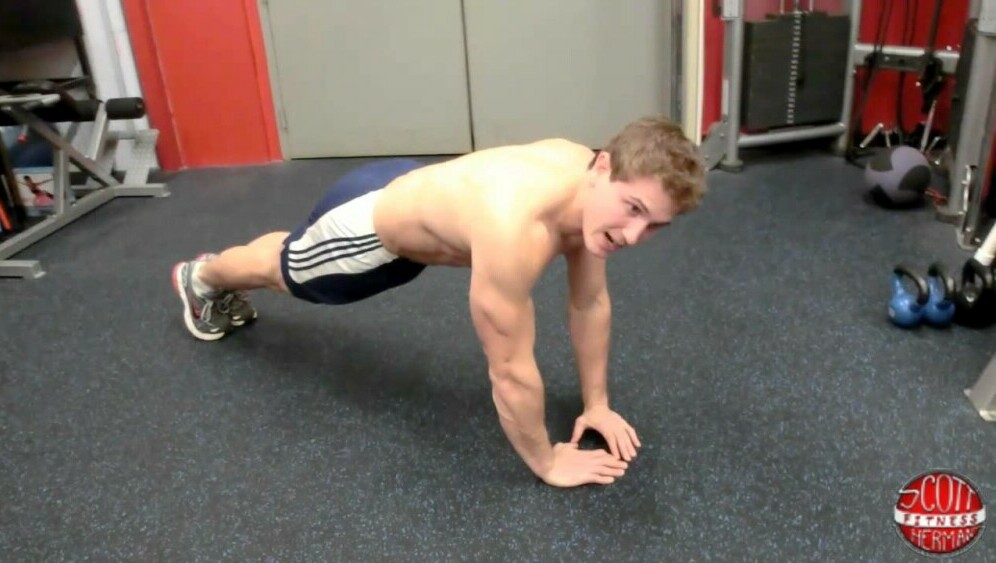
Summarizing, I now do planks and diamond push-ups, but in the past I have done free squats, heel raises, lunges, chins and – of course – outdoor runs, jogs or walks. It really is possible to get a full body workout without any equipment or gym memberships.
RESISTANCE BANDS
I have found that resistance bands with handles can effectively work every muscle group, while giving us some protection of our joints.
It is possible to attach the bands to a door and then pull them inward while facing the door. This is a good rowing exercise for back muscles. We can also face away from the door and pull them around to our chest for pectoral development.
We can face the door and pull them backward, straightening our arms at the elbow for a good triceps workout. This is the “kickback” exercise.
Or we may step on the midpoint of the bands and curl them upward for the biceps. The picture below shows a young man apparently working his biceps with upward and then inward motions. This stresses both the biceps and the deltoid muscles.
As we curl a dumbbell upward, the weight becomes easier to handle as we get to the top. With a resistance band, the opposite is true. The weight is tougher the farther we pull it. Big difference!
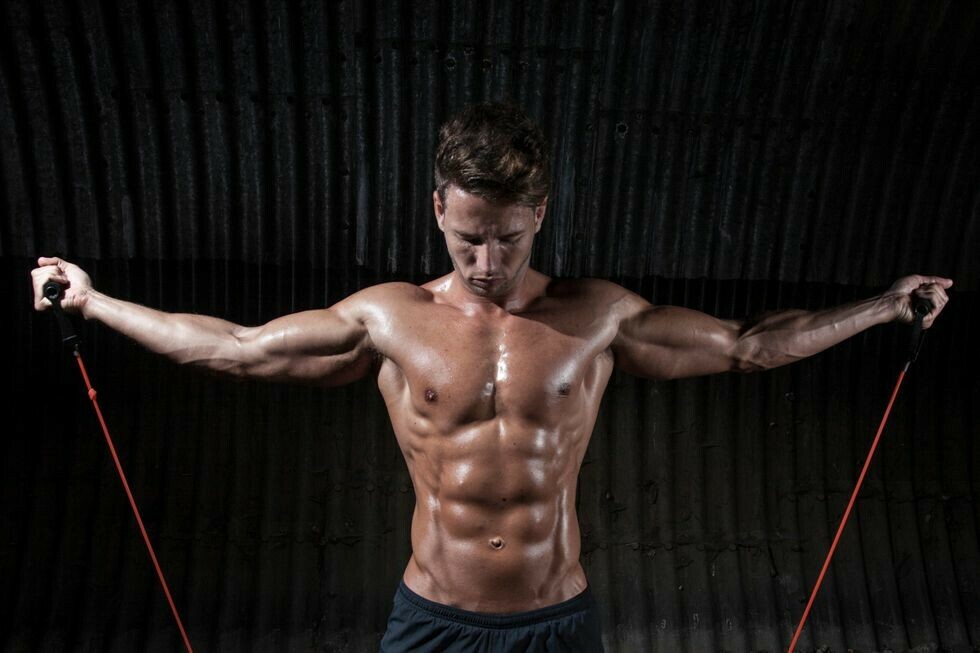
Here is a video showing a complete body workout with resistance bands with no attachments to doors.
This video shows a workout with door attachments.
Both of the above videos show the use of resistance bands with handles. Another type is called loop bands or booty bands.
Check this video for a booty band workout.
Here are a few selections of resistance band sets. These are from Amazon. As an Amazon customer and associate, I like to buy their products and enjoy the quick delivery and good service. As an associate, I can use their links in connection with my articles and benefit from activity on the links. Prices stay the same in any case.
Resistance band set, with door anchor, handles and varied resistances. Note the reasonable price.
Heavier resistance bands – complete set with everything you need.
Loop (or booty) bands – high quality, less than $15
TRX suspension training system – resistance and suspension for optimal results
There are several versions of what we may call resistance bands. All of them provide effective full body workouts. Look around for what Amazon has. Every link gives us similar other links.
BULLWORKER
I have used Bullworker workout tools for about 6 years and have become quite addicted to them. Originally constructed for isometric use only, they offer effective isotonic resistance as well. My practice is to do isotonic reps with isometric finishes. All of the Bullworker tools are effective in preventing any joint pain.
The Bullworker Steel Bow is shown below. I use this for my chest workout and have found this a great pectoral developer.
The black handles at each end may be pushed inward against the resistance of the springs within the steel cylinder. Or the other black handles may be pulled apart for a different effect.
Note the five different springs, which may be used to give us different resistances. I have found the Steel Bow to be also a good exercise tool for traveling. It is compact, yet powerful and challenging.
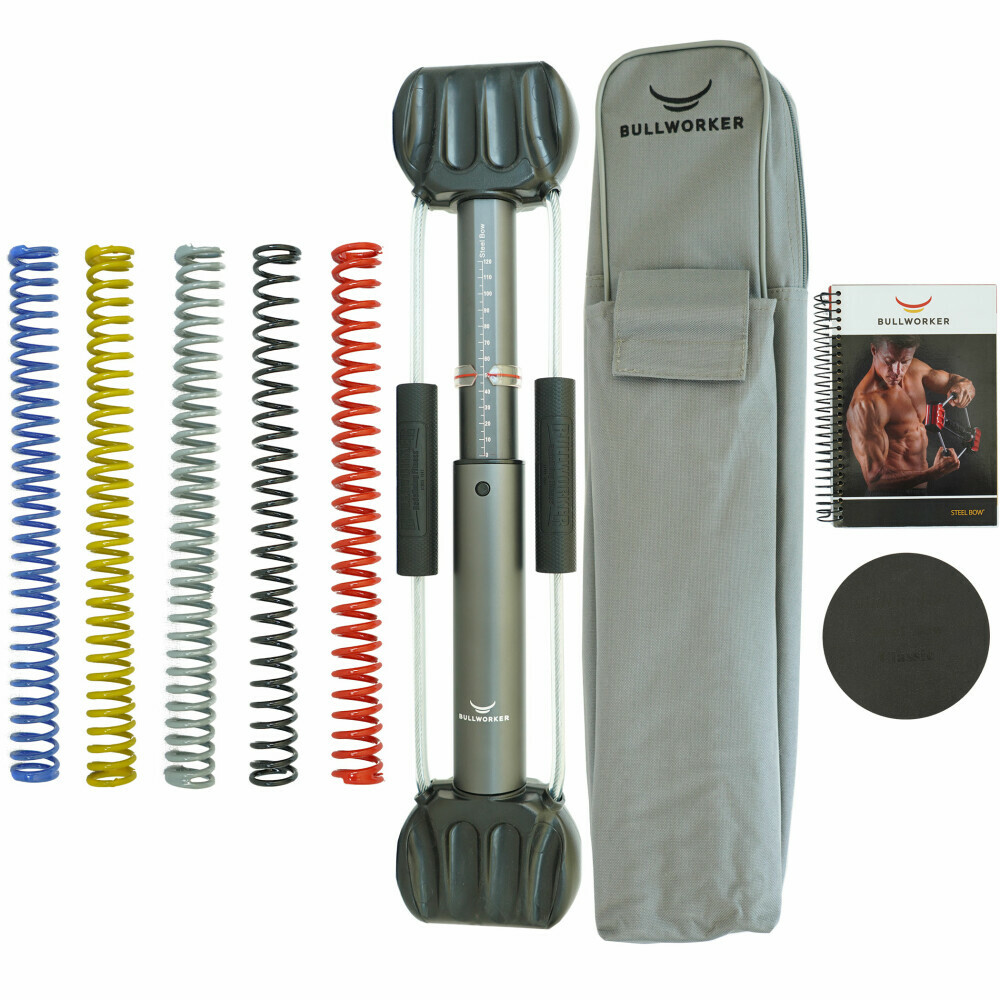
I use the Bow Classic primarily for back exercise. It is larger, though similar to the Steel Bow. The Bow Classic is shown below. This movement is the “archer”, which is done on both sides to build the latissimus dorsi muscles.
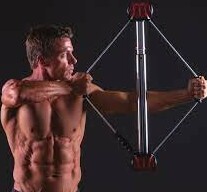
Check out this video for a non-biased review of Bullworkers by a young bodybuilder. He is laid back and entertaining, but also an accomplished bodybuilder. He uses free weights and Bullworkers.
It is also noteworthy that martial artist Bruce Lee used Bullworkers as a young man to build force in his striking muscles.
I use both the Steel Bow and the Bow Classic every other day in my routines.
I also use Bullworkers for core training, with a version of this exercise. I do reps first and then a hold at the end and I only do the resisted crunches, not the elevated movements. (And I do them indoors). My practice is to do 20 reps to the right side, 20 to the left and then 30 to the center.
Check out my Bullworker link at the side of my website. Click on the red link for full information from the Bullworker website.
FINAL THOUGHTS
Over the years, physical exercise for fitness (and physical therapy) have grown in sophistication and in variety of training modes. We are able to choose from a larger spectrum of exercise forms or modalities to contract our muscles. We may simply like one method over another. Or we may change our routines as our bodies age. I have constantly seen the need to change equipment, sets, reps and exercise forms.
The good news is that we may keep a youthful body much longer than in years past – if we want to and have the discipline!
Please leave me any comments or questions in the “Comments” section below. Or email me, richard@myworkoutathome.com.
Let’s stay motivated!